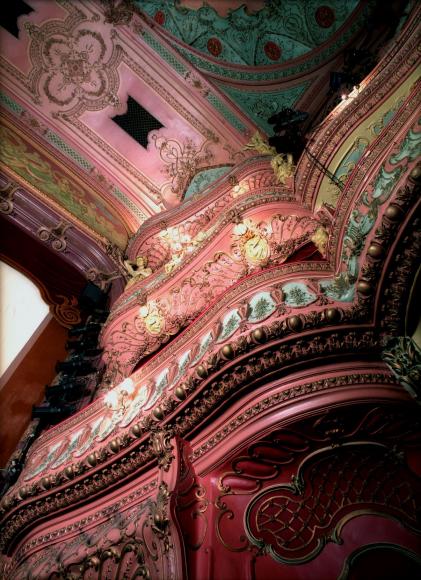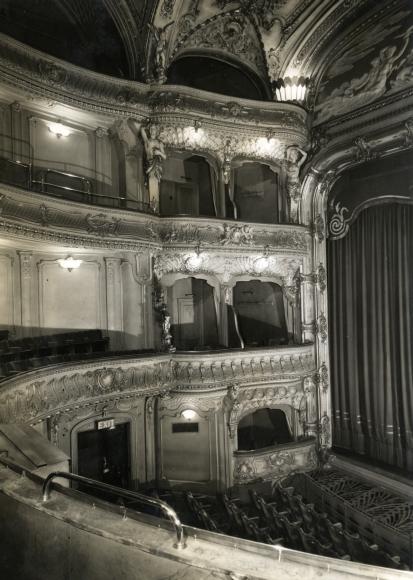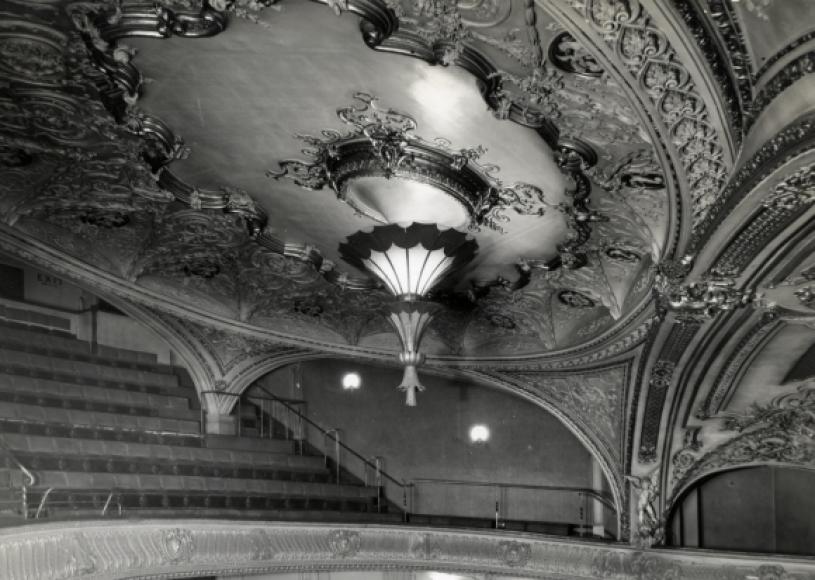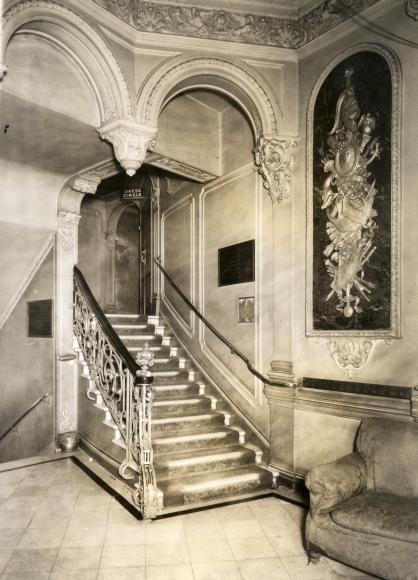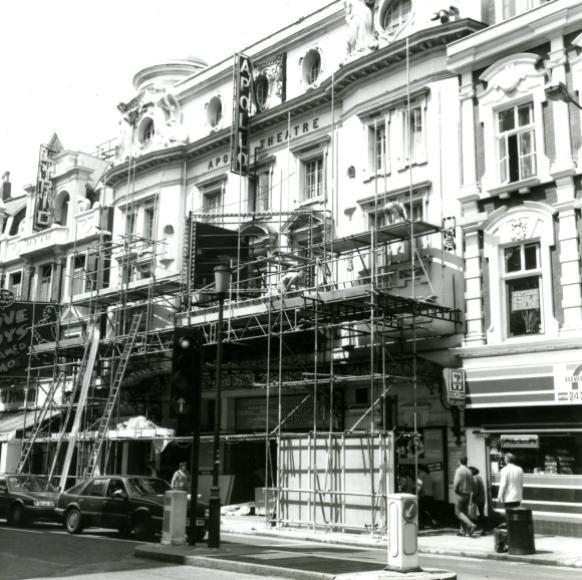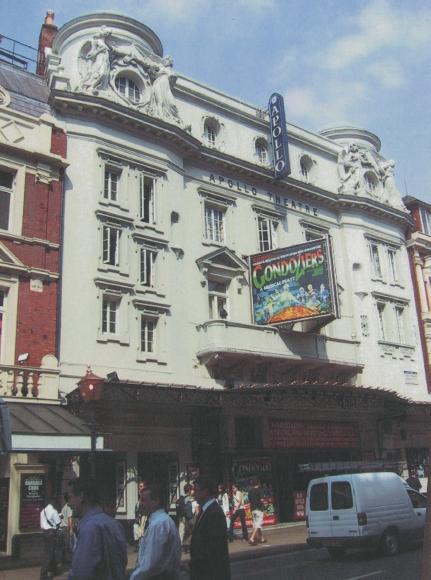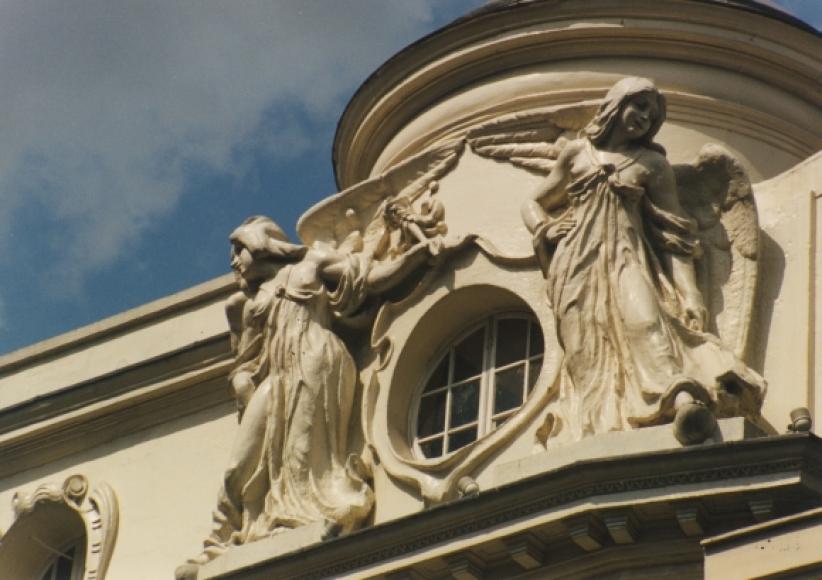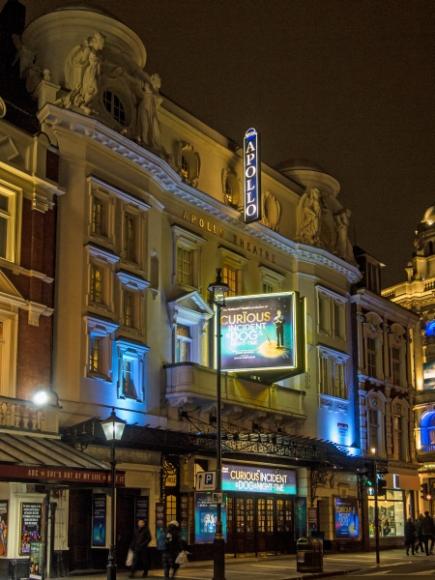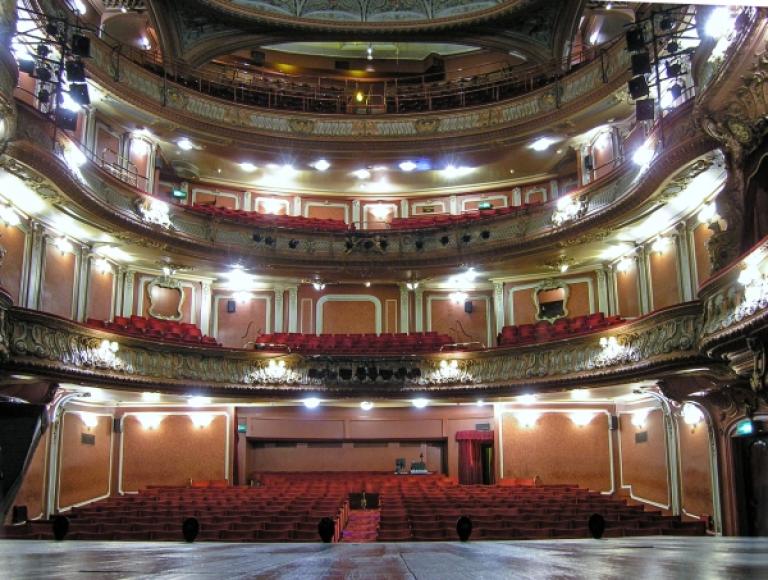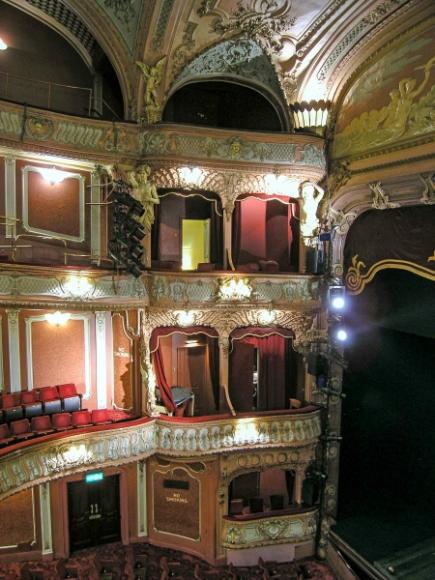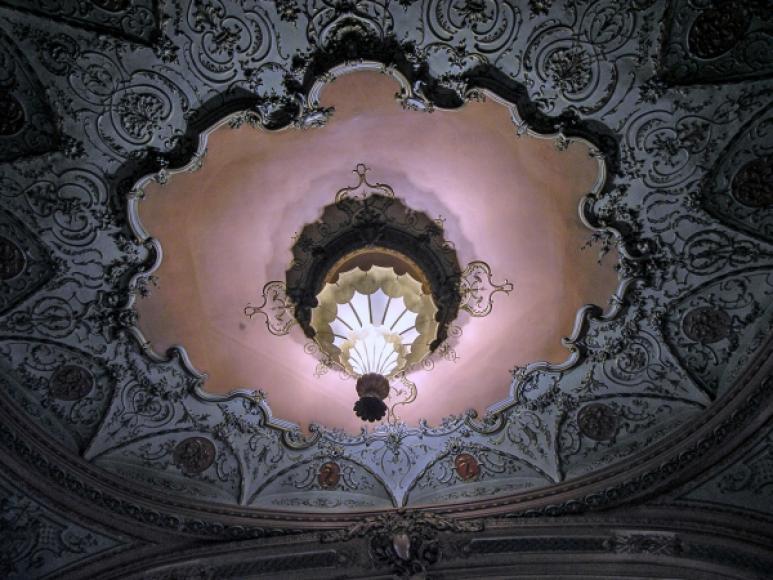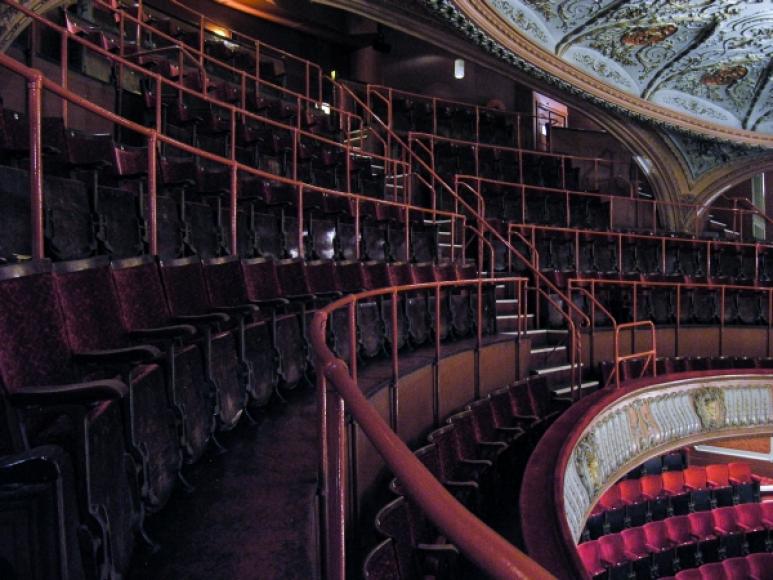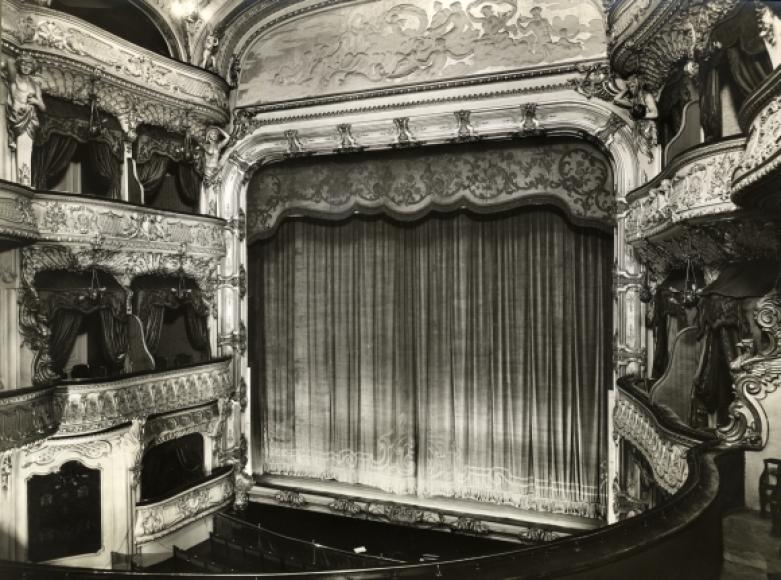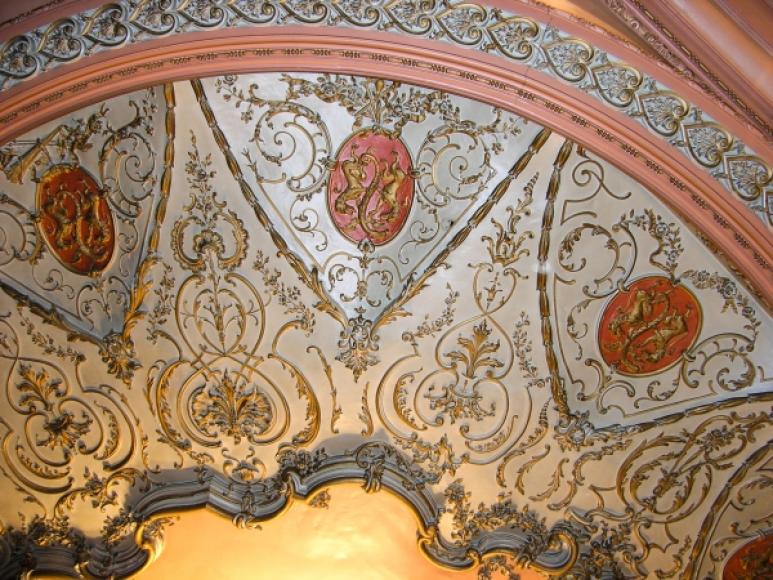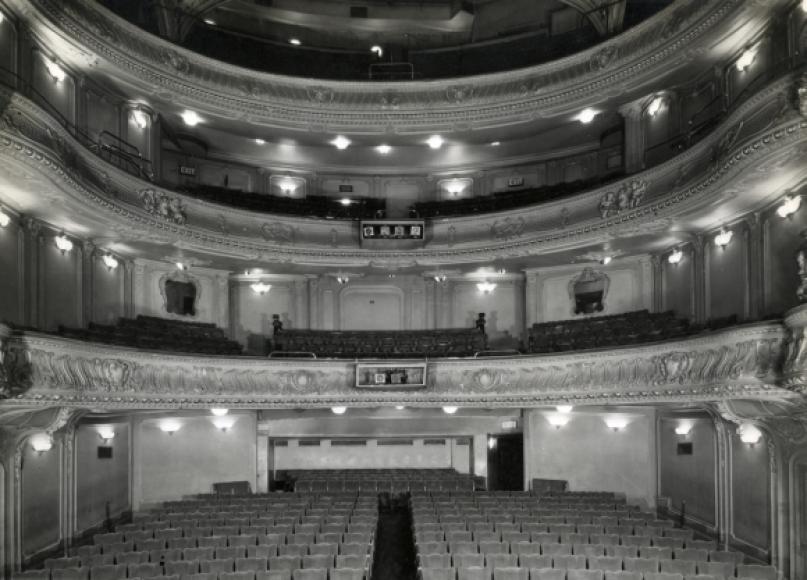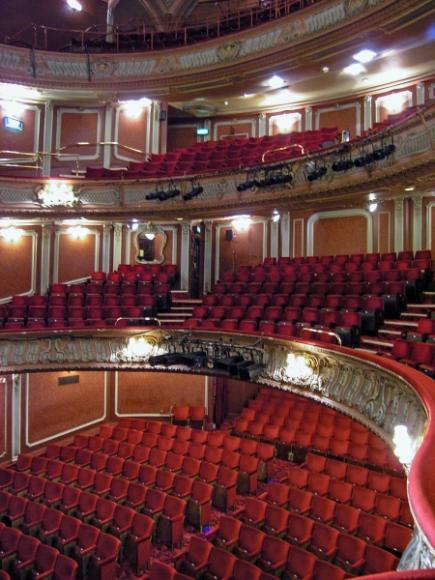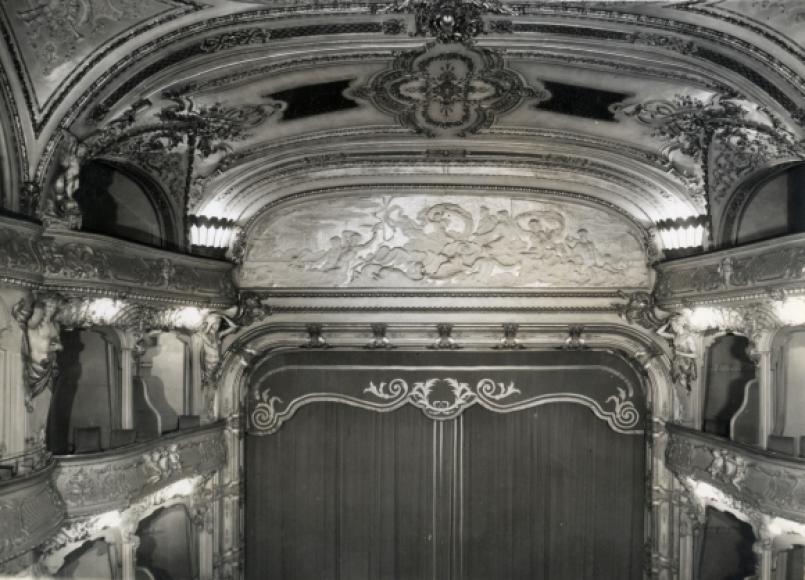Apollo
The Apollo, externally, is quite unlike any other theatre of its time in London. Its architectural and historic significance is underestimated. Together with the Lyric, the Gielgud and the Queens, all grouped on the north side of Shaftesbury Avenue, the Apollo contributes to one of London’s most important Theatreland streetscapes. This was Sharp’s only complete theatre (he made major alterations to Camberwell Palace in 1908).
The main facade is in a free Renaissance style with a distinct Art Nouveau flavour; Portland stone, in three main storeys with a tall attic above the cornice; three major bays, the outer two treated as pavilions with flat canted fronts around which the main cornice breaks. Prettily framed oeil-de-boeuf windows to the attic, heavy cornice, balcony with shouldered and eared architraves to windows. The pavilion attics are treated as short, flat-domed towers with striking figure sculpture (pairs of winged female Muse figures with flowing drapery) by T Simpson. Well restored iron and glass canopy over entrance with timber and glass front entrance doors. Flank and rear facades in red brick.
Lively auditorium with splendid plaster enrichment in Louis XIV manner, updated by Shaufelberg in 1932 to include, amongst others, pendant light and proscenium sconces. Three cantilever balconies terminating in elaborately modelled serpentine-fronted boxes. A riot of decorative plasterwork including Phoenix, atlantid, mythical sea monsters and musical instruments. Bolection moulded panels on three levels. Also Putti, heraldic lions and touch of life motifs and mahogany doors throughout. Proscenium arch with bold architrave moulding, lyre-buckled at intervals. Relief of Apollo and Muses in tympanum over proscenium. Finely enriched oval ceiling on pendatives. Decorative foyer and anteroom to Royal Box. Modern stalls bar.
- 1901 : continuing
Further details
- Owner/Management: For licensees up to 1950, see Diana Howard, op cit.
- 1901 Design/Construction:H van Hooydonk- Consultantauditorium decorationT Simpson- Consultantfaçade sculpture
- 1901 Use: continuing
- 1901 Design/Construction:Lewen Sharp with H van Hooydonk- Architect
- 1932 Alteration: altered internallyErnest Shaufelberg- Architect
- 1975 Owner/Management: Stoll Moss Theatres
- 1991 Alteration: old box office removed; minor alterations within entrancePaul Jenkins (Stoll Moss house architect)- Architect
- 2005 Owner/Management: Nimax Theatres
- CapacityOriginalDescription893
- CapacityCurrentDescription756
- ListingII
